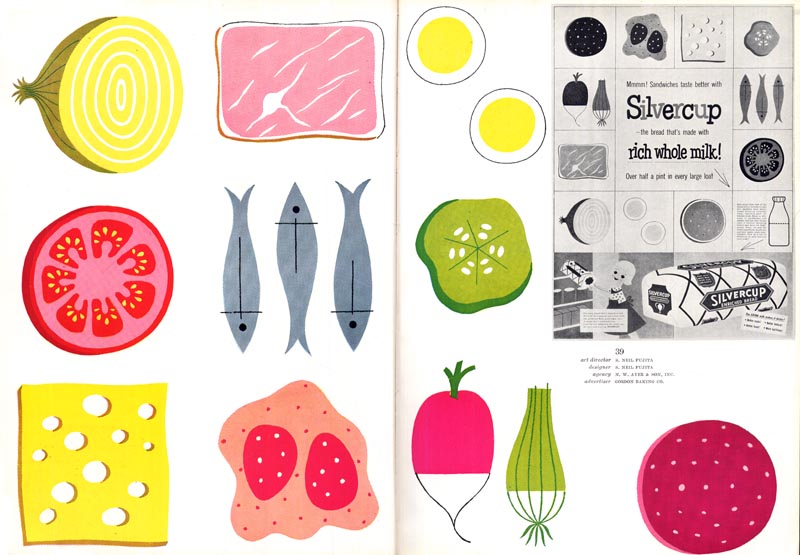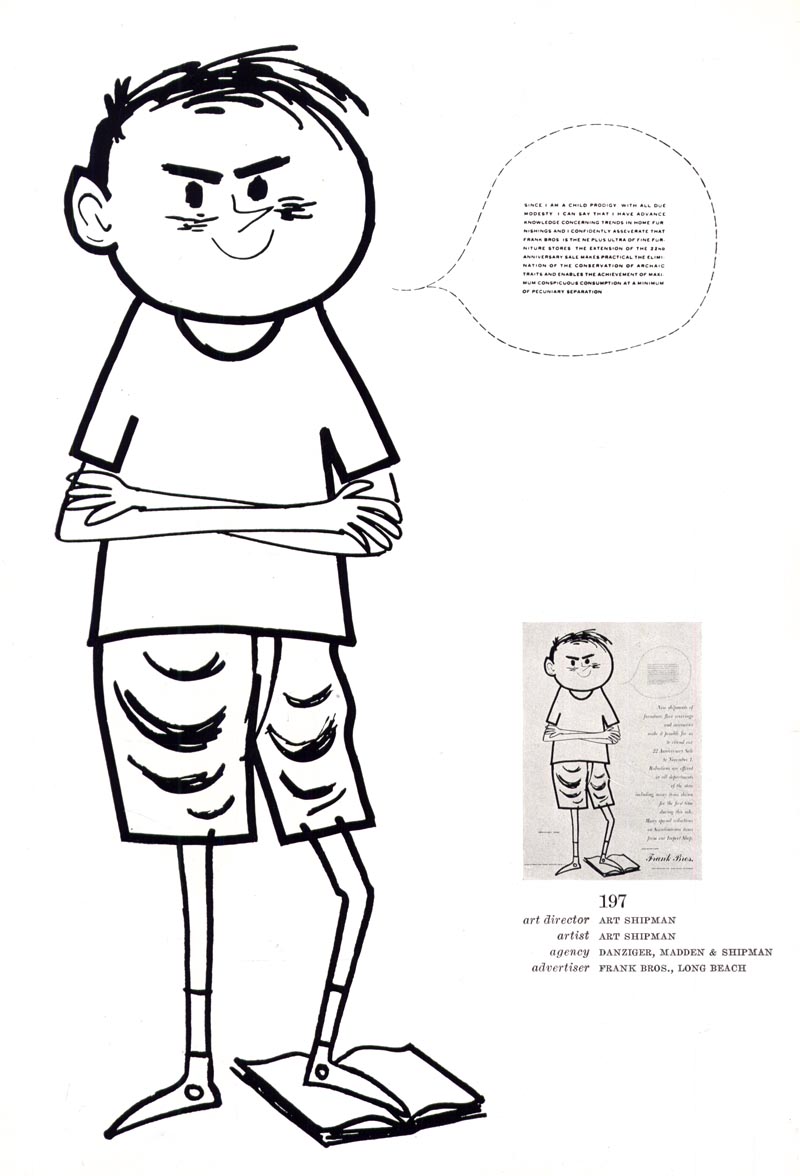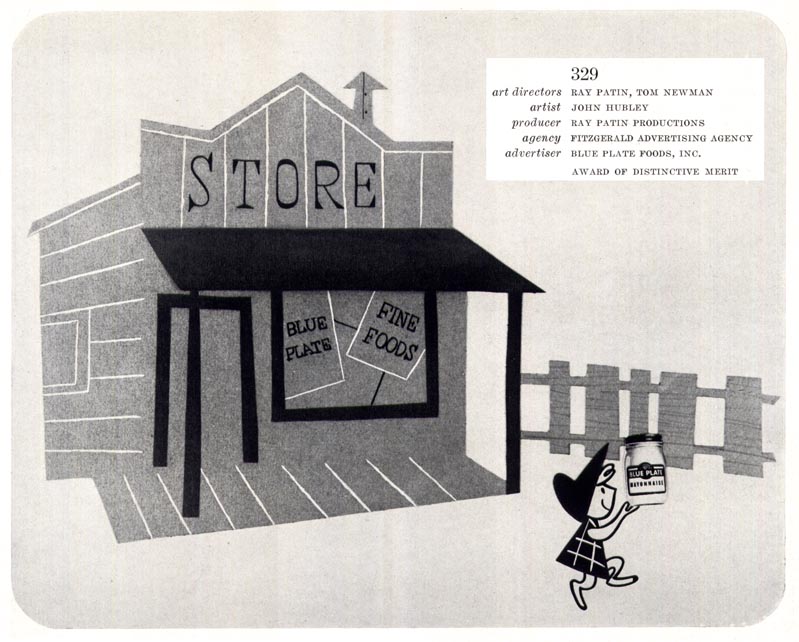Two extremely important points were raised by commenters: that beyond the niche of cartooning, modern abstract (and abstract expressionist) art must surely have impacted how all commercial art was evolving...

... and that television (especially with the technical issues of those early broadcasts) required art with a greater degree of clarity and simplicity to ensure audiences could clearly see the visuals being presented and quickly grasp the message being conveyed.

All of today's images are from the 1952 New York Art Directors Annual. Based on the majority of pieces included in that volume, one quickly sees that the selection committee was drawn to images that emphasized those qualities.

Gone are the fully-rendered, painterly pieces, realistic representations, and traditional subjects.

The vast majority of images in that year's show would bring to mind words like "clarity", "simplicity", "modernity", "abstraction", "design" and "fine art".

Clearly the mid-century was a period of tremendous upheaval in the world of art and design. Drawing a straight line (if you'll forgive the pun) to determine the order of who influenced who seems next to impossible. Between advances in technologies (photography, television) and the changing tastes of an increasingly sophisticated post-war audience, it really seems as though everything was happening at once!

For the illustrator, "art for tv" looked like a promising new market - and not just in the field of animation.
Tomorrow - beyond cartoons






0 comments:
Post a Comment